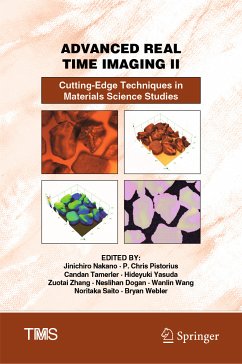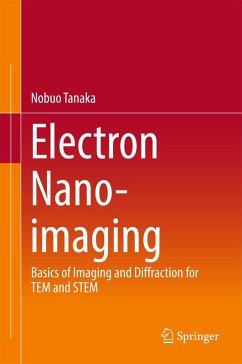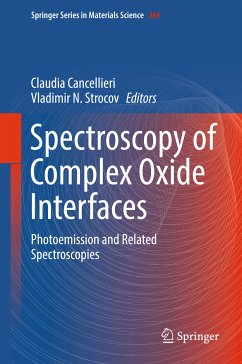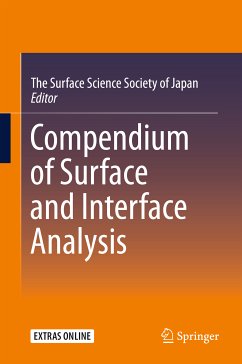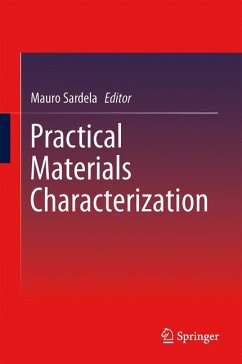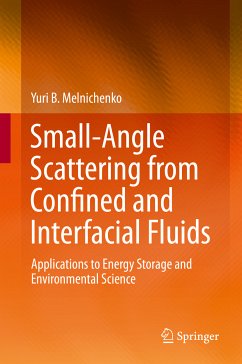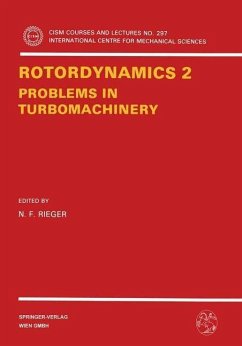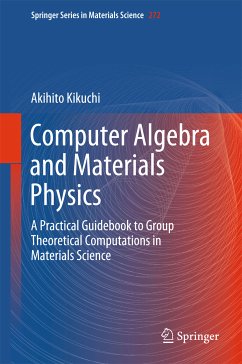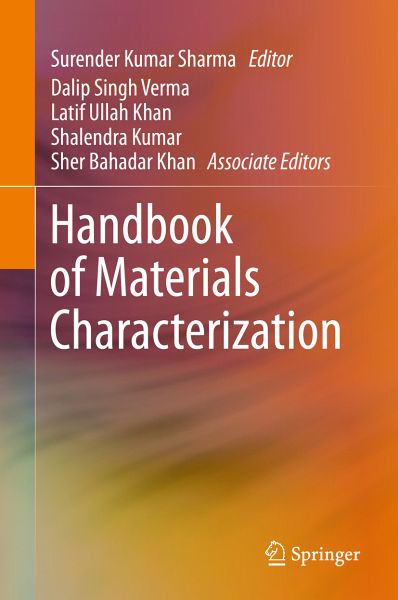
eBook, PDF
Handbook of Materials Characterization (eBook, PDF)

PAYBACK Punkte
60 °P sammeln!





Provides comprehensive information on the structural, morphological and spectroscopic characterization of materials
Addresses theoretical and experimental aspects alike, with special emphasis on sample preparation and experimental setup
Includes sections devoted to instrumentation and data interpretation for each technique covered
Addresses theoretical and experimental aspects alike, with special emphasis on sample preparation and experimental setup
Includes sections devoted to instrumentation and data interpretation for each technique covered
Dieser Download kann aus rechtlichen Gründen nur mit Rechnungsadresse in A, B, BG, CY, CZ, D, DK, EW, E, FIN, F, GR, HR, H, IRL, I, LT, L, LR, M, NL, PL, P, R, S, SLO, SK ausgeliefert werden.
Prof. Dr. Surender Kumar Sharma has obtained his PhD in July 2007 from Himachal Pradesh University, Shimla India. After spending several years in research/academic positions in Brazil, France, Czech Republic, India and Mexico working in the area of nanomagnetism and functional nanomaterials, he has joined Federal University of Maranhão, Brazil, as a Professor of the Department of Physics, where he stands since February 2015. Currently he is an active member of the Graduate research program at UFMA and actively involved in research, teaching and supervising research students at UG/G levels. He has been awarded as FAPEMA Senior Researcher award in August 2015. To date, Dr. Sharma has published more than 70 research articles in reputed journals, 3 books as a single author and 3 book chapters. Dr. Dalip Singh Verma obtained his PhD in Physics in 2008 from Panjab University, India. During his PhD, he spent a few months at Frankfurt Institute of Advance Studies, Germany, as part of his PhD thesis. Later, he served as an Assistant Professor in Physics at Government College for Girls, Sector-11 Chandigarh and Government College Bassa, District Mandi (H.P.) India. Since 2012, he is working as an Assistant Professor in Physics at Department of Physics & Astronomical Sciences, Central University of Himachal Pradesh, Dharamshala, Kangra (H.P.)-India. Dr. Latif Ullah Khan has obtained his PhD in Inorganic Chemistry (2015) from Institute of Chemistry, University of São Paulo, Brazil. Currently, he is working as a researcher (postdoc) at Brazilian Nanotechnology National Laboratory (LNNano), CNPEM, Campinas-SP, Brazil. His research interests include design and characterization of optical and magnetic nanomaterials as well as their toxicity assessment in zebrafish and c. elegans models using m-XRF images, in correlation with Cytoviva hyperspectral images and confocal laser microscope images. In addition, application of these nanomaterials for the development of multifunctional nanoprobes for early detection of complex diseases such as cancer He also studies the photoluminescence and electronic spectroscopy of rare earth materials for application in development of solid-state white light- emitting diodes (WLEDs). Dr. Shalendra Kumar is currently working as Assistant Professor at the Department of Applied Physics, Amity School of Applied Sciences, Amity University Haryana, Gurgaon, India, since August 2016. Dr. Kumar obtained his Ph.D. in Physics from AMU, Aligarh. After completion of Ph.D., he worked as a fellow of Korean Research Foundation (KRF), from February 2008 to March 2009 and Research Professor under the Brain Pool Program of South Korean Federation of Science and Technology from April 2009 to January 2012, at Changwon National University, South Korea. In February 2012, he joined the Beam line Division, Pohang Light Source II as a Research Scientist till April 2013. Dr. Kumar also workedas an Assistant Professor, at Department of Physics, National Institute of Technology, India, from August 2013 to November 2013. Again from December 2013 to July 2015, he worked as a Research Professor at Changwon National University, Republic of Korea. Dr. Kumar also served as visiting Professor at Department of Physics, Federal University of Maranhão, Brazil, from December 2015 to May 2016. Dr. Kumar has published more than 140 research papers in international peer-reviewed journals. Prof. Dr. Sher Bahadar Khan obtained his Ph.D. from HEJ, Karachi University, Pakistan. After completion of Ph.D, he started his post-doctoral career in Nanochemistry and Nanotechnology and continued to work as a post-doctoral research fellow until February 2010 at Yonsei University, South Korea. In March 2010, he joined the Center for Advanced Materials and Nano-engineering, Department of Chemistry, Najran University, as an Assistant Professor and continued his work until 31st August 2011. Currently he is an Assistant Professor in the Chemistry Department, King Abdulaziz University, Saudi Arabia, since September 2011. He is the author of several research papers, books, and patents with more than 2800 citations and 32 h-index.
Produktdetails
- Verlag: Springer International Publishing
- Seitenzahl: 613
- Erscheinungstermin: 18. September 2018
- Englisch
- ISBN-13: 9783319929552
- Artikelnr.: 53986817
Für dieses Produkt wurde noch keine Bewertung abgegeben. Wir würden uns sehr freuen, wenn du die erste Bewertung schreibst!
Eine Bewertung schreiben
Eine Bewertung schreiben
Andere Kunden interessierten sich für


